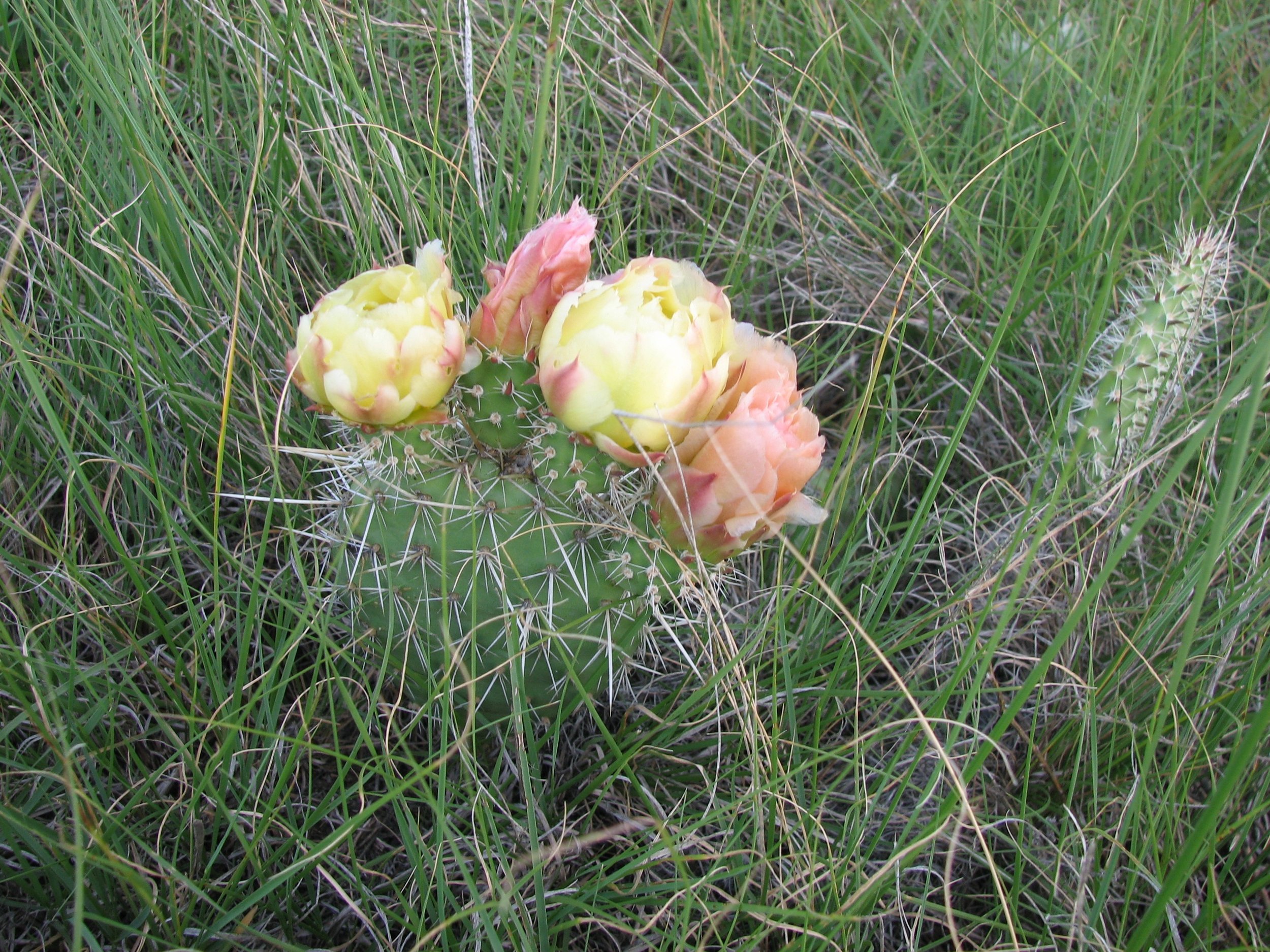Prickly Pear Cactus
Ethnobotany
On eroded slopes in the driest conditions, this cactus with its flat, paddle-shaped segments (12–15 cm across) can spread into a clump that measures 1 m or more wide. The thorns, 1–5 cm long, are dangerous as they can pierce leather, and will cause severe discomfort if stepped on. The large, showy yellow flower matures into a prickly fruit, 30 mm long, that is very seedy.
According to Wilkinson, “Cactus is high in calcium, phosphorus and vitamin C and is said to taste like raw cucumber or green beans....and the dried seeds can be ground into flour or used as a thickener.” (137)
Royer and Dickinson make an assertion, corroborated by Johnston, that “To treat rheumatism, the Blackfoot inserted the spines of this cactus into the flesh of the patient, then set them afire and let them burn to the surface of the skin. This treatment helped the patient to forget about his aches and pains.” (273) A less painful medicinal use was to bind wounds with a dressing made of peeled stems. (Johnston 45–46)
Blackfoot artists had an interesting use for this plant: freshly cut stems were rubbed over a painted design, and the mucilaginous juices acted as a sizing to fix the colours. This sticky juice could also clear water of suspended particles—a freshly cut stem being placed in a container of muddy water. (Johnston 46)
The prickly pear features in the Blackfoot legend, known as The Seven Stars, where it is said that “ ‘when it is dark we will scatter prickly-pears around the lodge [as protection from a sister who had turned into a bear].’ ” (Johnston 46)
Botany
Growth habit and range: This is a prostrate, succulent plant which is commonly found on dry sites throughout the southern portion of the province. This plant forms a mat and grows to a height of up to 15 cm.
Description: The stems are flattened, roughly the shape of an inverted pear, and measure up to 12 cm wide. The leaves are modified to clusters of narrow, sharp ended spines which measure up to 3.5 cm in length. The flowers appear in June and July and are yellow to pink in colour and 5–8 cm in diameter. Each flower is comprised of many waxy petals up to 3.5 cm long, a single green stigma and many orange stamens. The fruit is a red, spiny, edible berry measuring up to 3.5 cm in length, which contains many irregularly flattened, pale coloured seeds which are 5 mm in maximum dimension.
References
Johnston, Alex. 1987. Plants and the Blackfoot. Occasional Paper No. 15., Lethbridge Historical Society, AB.
Royer, France and Richard Dickinson. 2007. Plants of Alberta. Lone Pine Publishing, AB.
Wilkinson, Kathleen. 1999. Wildflowers of Alberta: A Guide to Common Wildflowers and Other Herbaceous Plants. University of Alberta Press and Lone Pine Publishing, AB.

